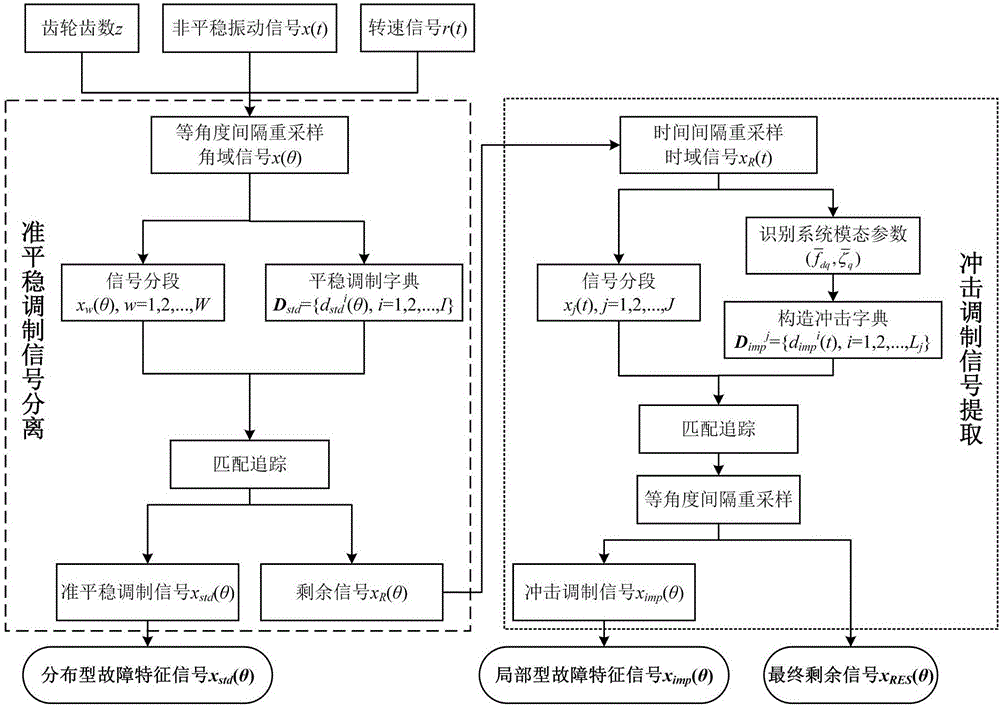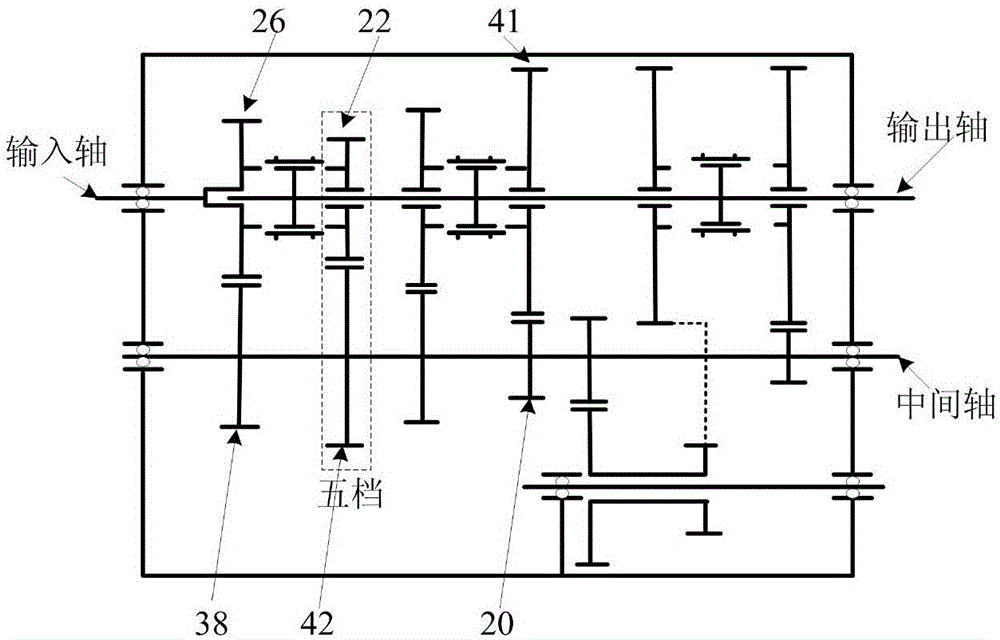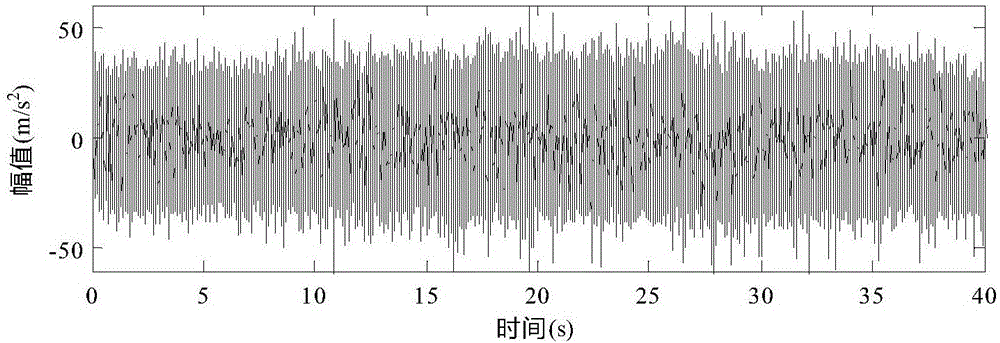Fault characteristic extraction method for non-stationary signal of gear box
A non-stationary signal, fault feature technology, applied in the direction of machine gear/transmission mechanism testing, measuring devices, instruments, etc., can solve the problems of gearbox fault feature separation and lack of research results.
- Summary
- Abstract
- Description
- Claims
- Application Information
AI Technical Summary
Problems solved by technology
Method used
Image
Examples
Embodiment 1
[0090] like figure 1 , this embodiment discloses a method for extracting non-stationary signal fault features of gearboxes based on sparse decomposition and order tracking, which can be used for fault diagnosis of stationary faults and impact faults in gearboxes under variable speed conditions. Specifically include the following steps:
[0091] S1. Synchronously collect the time-domain vibration acceleration signal and speed signal of a measurement point of the gearbox case under variable speed conditions.
[0092] specific:
[0093] S1-1. Establish a space coordinate system XYZ, where the positive direction of the X-axis points to the direction from the input shaft to the output shaft of the central axis of the gearbox, the positive direction of the Z-axis is vertically upward, and the positive direction of the Y-axis is determined by the right-hand rule;
[0094] S1-2. Install a unidirectional acceleration sensor on the surface of the bearing seat of the gearbox, the test ...
Embodiment 2
[0147] This embodiment specifically illustrates the non-stationary fault feature extraction method of a gearbox based on sparse decomposition and order tracking disclosed by the present invention through a fault simulation test of an automobile transmission:
[0148] The tested gearbox is a three-shaft five-speed automotive manual transmission, and its structure is as follows: figure 2 As shown in , the set fault type is broken teeth of the fifth gear output gear. Taking the input shaft as the reference shaft, the number of teeth and characteristic parameters of the gears at each stage are listed in Table 1. The data acquisition system is Muller-BBM.
[0149] Table 1 Experimental test gear box operating parameters
[0150]
[0151] This embodiment is realized through the following specific steps:
[0152] (1) Synchronously collect the time-domain vibration acceleration signal and speed signal of a measuring point on the gear box under the variable speed condition. The s...
PUM
 Login to View More
Login to View More Abstract
Description
Claims
Application Information
 Login to View More
Login to View More - R&D
- Intellectual Property
- Life Sciences
- Materials
- Tech Scout
- Unparalleled Data Quality
- Higher Quality Content
- 60% Fewer Hallucinations
Browse by: Latest US Patents, China's latest patents, Technical Efficacy Thesaurus, Application Domain, Technology Topic, Popular Technical Reports.
© 2025 PatSnap. All rights reserved.Legal|Privacy policy|Modern Slavery Act Transparency Statement|Sitemap|About US| Contact US: help@patsnap.com



